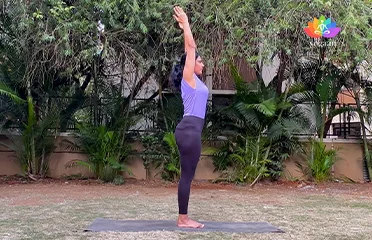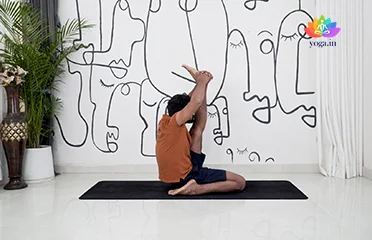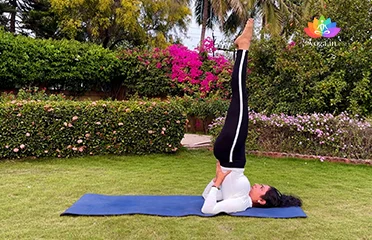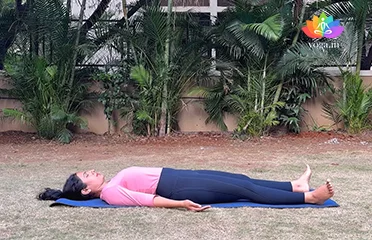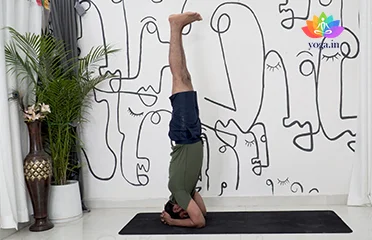Hastapadasana (Hand to Foot Pose)
हस्तपदासन / Hand to Foot Pose
The sanskrit name is derived from hasta (हस्त) means hands, pada (पदा) [�K]
Kraunchasana (Heron Pose)
क्रौञ्चासन / Heron Pose
The Sanskrit name is derived from Kraunch (क्रौञ्च) meaning heron [�K]
Sarvangasana (Shoulderstand)
सर्वाङ्गासनI / Shoulderstand
The Sanskrit name is derived from Sarva (सर्वाङ्ग) meaning all, [�K]
Savasana (Corpse Pose)
शवासना / Corpse Pose
The Sanskrit name is derived from Śhava (शव) meaning "corpse" and āsana [�K]
Sirsasana (Headstand)
शीर्षासन / Headstand
The Sanskrit name is derived from Sirsa (शीर्ष) meaning head and asana [�K]
Finding Relief – Yoga for Anemia
Understanding Anemia:
Anemia is a condition characterized by a deficiency in red blood cells or hemoglobin, the protein within red blood cells that carries oxygen throughout the body. This deficiency leads to fatigue, weakness, shortness of breath, and other symptoms. There are various types of anemia, each with its own cause.
Key Factors Contributing to Anemia:
- Iron deficiency: This is the most common cause of anemia, often due to insufficient iron intake in the diet or difficulty absorbing iron from food.
- Vitamin deficiencies: Deficiencies in vitamin B12, folate, and vitamin A can also contribute to anemia.
- Chronic diseases: Certain chronic health conditions like kidney disease, autoimmune disorders, and inflammatory bowel disease can hinder red blood cell production.
- Blood loss: Heavy menstrual bleeding, internal bleeding from ulcers or other causes, and blood donation can lead to iron deficiency and anemia.
- Bone marrow problems: Conditions affecting bone marrow, the factory where red blood cells are produced, can cause various types of anemia.
- Genetic factors: Some forms of anemia, such as sickle cell anemia, are inherited.
Symptoms of Anemia:
- Fatigue and weakness
- Pale skin
- Shortness of breath
- Dizziness or lightheadedness
- Cold hands and feet
- Headache
- Irregular heartbeat
- Chest pain
Treatment of Anemia Through Yoga and Pranayama:
While yoga cannot cure anemia, it can offer several benefits that may help those living with the condition:
- Improved Circulation: Certain yoga poses can promote better blood circulation throughout the body. This may help deliver oxygen more efficiently to organs and tissues, potentially improving energy levels.
- Stress Reduction: Chronic stress can worsen symptoms of anemia. Yoga’s focus on deep breathing and mindful movement helps manage stress levels, contributing to overall well-being.
- Increased Energy Levels: Gentle yoga poses and breathing exercises can help combat fatigue, a common symptom of anemia.
Important Considerations:
- Listen to Your Body: Always prioritize your comfort and well-being. Modify poses as needed and avoid anything that causes strain.
- Consult Your Doctor: Before starting a yoga practice, especially if you have a severe case of anemia or any underlying health conditions, discuss it with your doctor. They can advise on suitable poses and modifications.
Caution:
- Start slowly and gradually increase intensity. Be mindful of your body’s limits and avoid overexertion, which can worsen fatigue.
- Use proper technique to ensure correct alignment and breathing patterns to avoid injury.
Contraindications:
- Active bleeding: Avoid yoga practice during active bleeding.
- Uncontrolled medical conditions: Consult your doctor if you have uncontrolled conditions like high blood pressure or heart disease.
- Recent injuries or surgeries: Allow sufficient time for healing before resuming yoga practice.


